Art World
The Most Exciting Museum Shows Around the US in 2017
The most exciting US shows, from a massive Merce Cunningham tribute to the art of Cuba.
![Jimmie Durham, La Poursuite du Bonheur [The Pursuit of Happiness], 2003 35mm film transferred to DVD, color, sound. 13:00 min. Courtesy of the artist and kurimanzutto, Mexico City. Jimmie Durham, La Poursuite du Bonheur [The Pursuit of Happiness], 2003 35mm film transferred to DVD, color, sound. 13:00 min. Courtesy of the artist and kurimanzutto, Mexico City.](https://news.artnet.com/app/news-upload/2016/12/jimmie-durham.jpg)
The most exciting US shows, from a massive Merce Cunningham tribute to the art of Cuba.
![Jimmie Durham, La Poursuite du Bonheur [The Pursuit of Happiness], 2003 35mm film transferred to DVD, color, sound. 13:00 min. Courtesy of the artist and kurimanzutto, Mexico City. Jimmie Durham, La Poursuite du Bonheur [The Pursuit of Happiness], 2003 35mm film transferred to DVD, color, sound. 13:00 min. Courtesy of the artist and kurimanzutto, Mexico City.](https://news.artnet.com/app/news-upload/2016/12/jimmie-durham.jpg)
Ben Davis

“Jimmie Durham: At the Center of the World” at the Hammer Museum, January 29–May 7, 2017
The first US retrospective for the multifaceted Durham, whose considerations of the legacies of colonialism and the powers of assemblage truly seem more relevant than ever.
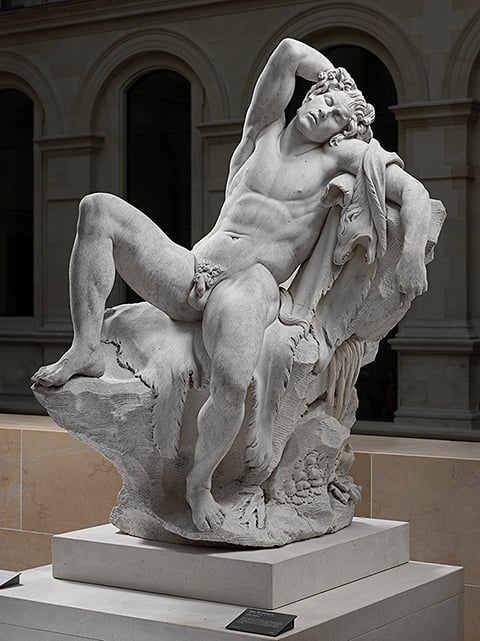
The Sleeping Faun, 1726-30, Edme Bouchardon, marble. Musée du Louvre, Département des Sculptures, Paris. Image courtesy Musée du Louvre, dist. RMN-Grand Palais / Raphaël Chipault.
“Bouchardon: Royal Artist of the Enlightenment” at the Getty, January 10–April 2, 2017
Co-organized with the Musée du Louvre, this show salutes a superstar of 18th-century France, spanning “copies after the antique, subjects of history and mythology, portraiture, anatomical studies, ornament, fountains, and tombs.”
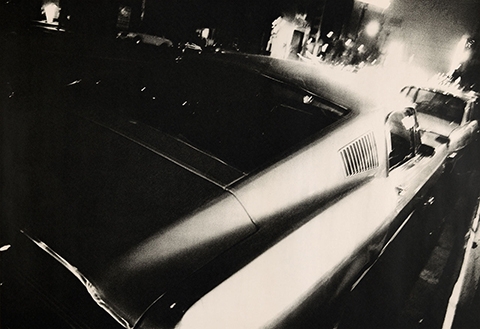
Takuma Nakahira. Night (1969). Image © Gen Nakahira.
“Provoke: Photography in Japan between Protest and Performance, 1960–75” at the Art Institute of Chicago, January 28, 2017–April 30, 2017
A major effort to reclaim the legacy of the Japanese avant-garde photography journal Provoke, which, in its relatively short lifespan (November 1968-August 1969) managed to define a style and pull together some of the most enduring greats of the era’s art photography: Daidô Moriyama, Takuma Nakahira, Takahiko Okada, Yutaka Takanashi, and Kôji Taki.
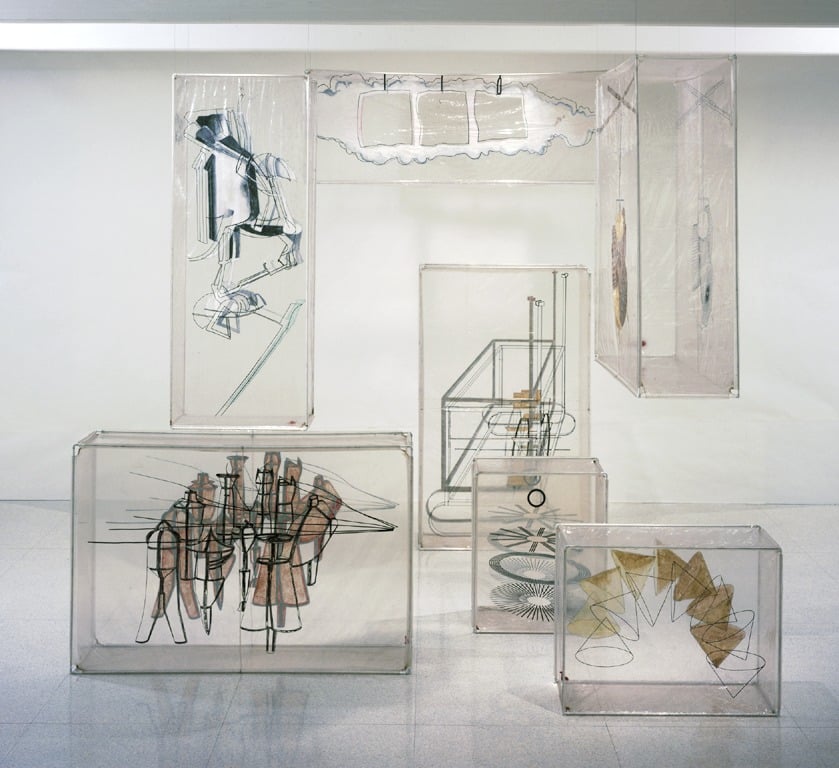
Jasper Johns, Set elements for Walkaround Time, 1968. Collection Walker Art Center, T. B. Walker Acquisition Fund, 2000.
“Merce Cunningham: Common Time” at the Walker Art Center and the Museum of Contemporary Art, Chicago, February 8–September 10, 2017
Set to be presented simultaneously in both Minneapolis and Chicago, this show promises not just 35 years of clips of dance performances by the famed choreographer, but also in-depth explorations of Cunningham’s epoch-making art collaborations, from John Cage and Robert Rauschenberg to Andy Warhol and Charles Atlas.
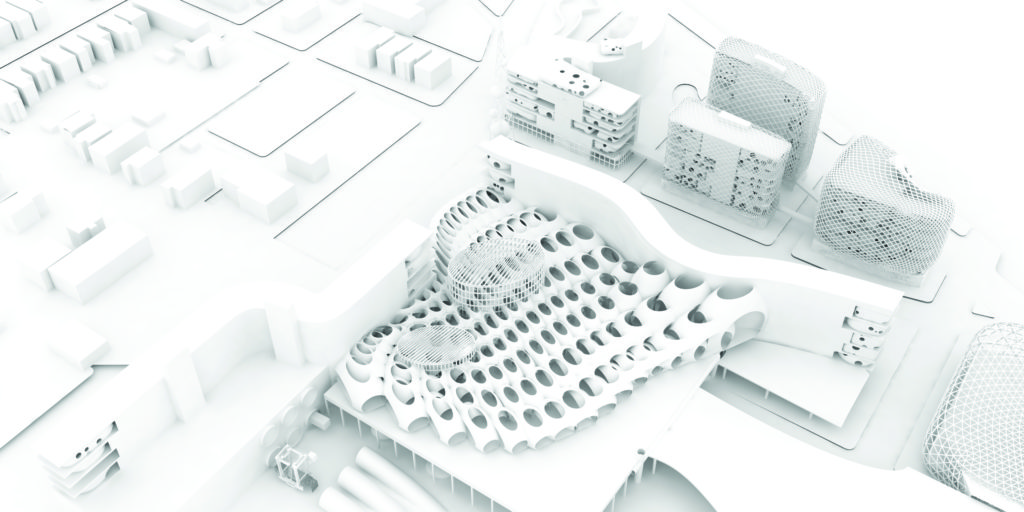
A(n) Office, Promised Land Air, 2016. Rendered aerial perspective of industrial studios with pneumatic freight, housing, air-purification network, and a Canadian consulate. Speculative project for Mexicantown/Southwest Detroit seen in The Architectural Imagination, an exhibition for the United States Pavilion, Biennale Architettura 2016, Venice. Courtesy A(n) Office.
“The Architectural Imagination” at the Museum of Contemporary Art, Detroit, February 11–April 23, 2017
Re-presenting last year’s US pavilion for the Venice Architectural Biennale, “The Architectural Imagination” offers a dozen speculative architecture projects designed to respond to the condition of Detroit, plus, in this incarnation, the promise of four actual architectural interventions into Motor City itself
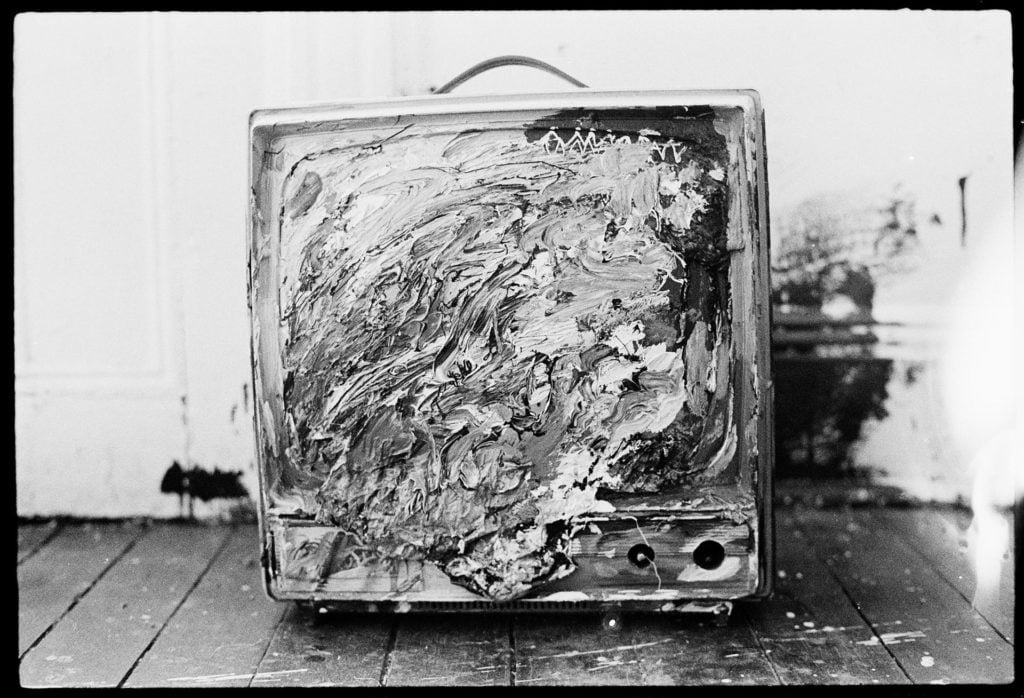
Painted Television in Apartment. Photo by Alexis Adler.
“Basquiat Before Basquiat: East 12th Street, 1979–1980” at Museum of Contemporary Art Denver, February 11, 2017–May 7, 2017
Public interest in artists doesn’t get more intense than that around Basquiat, and this showcase of the ephemera of the tragic NYC painter’s pre-fame life is sure to be a hot ticket.

Andrew Wyeth,
The Stone Fence, 1946. Private collection.
“Cross Country: The Power of Place in American Art, 1915–1950” at the High Museum, Atlanta, February 12–May 7, 2017
A sweeping consideration of the image of rural America in art, with more than 200 works by some 80 artists, including N. C. Wyeth, Andrew Wyeth, Georgia O’Keeffe, Grant Wood, Thomas Hart Benton, Jacob Lawrence, Grandma Moses, Hale Woodruff, Bill Traylor, Ansel Adams, Dorothea Lange, Alfred Stieglitz, and Peter Sekaer.
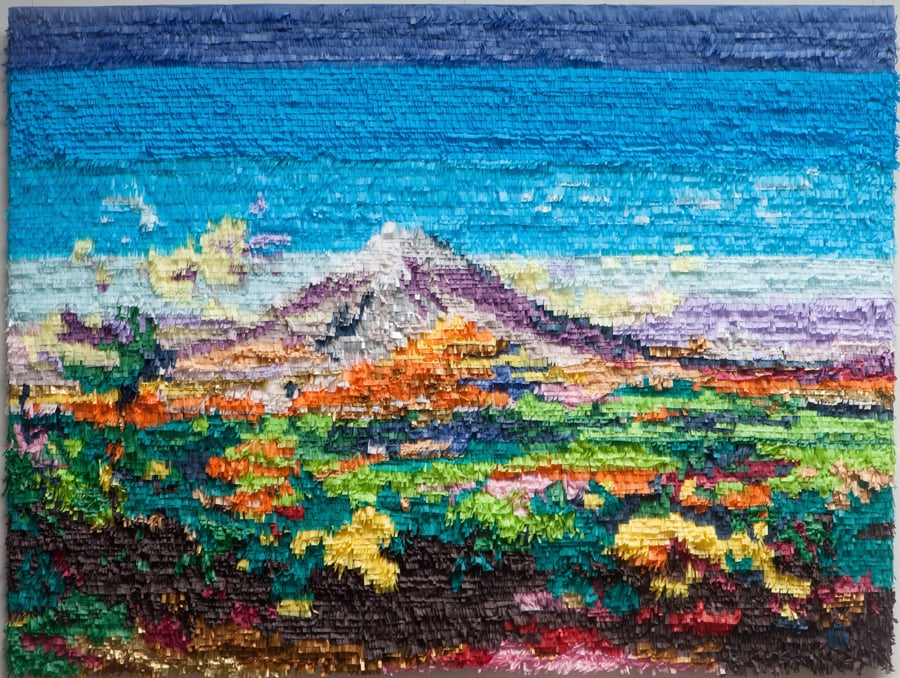
Justin Favela, Popocatepetl e Iztaccihuatl vistos desde Atlixco after Jose Maria Velasco (2016). Courtesy and © Justin Favela.
“Mi Tierra: Contemporary Artists Explore Space” at the Denver Art Museum, February 19–October 22, 2017
Site-specific installations by a variety of Latinx artists, all looking at the American West as subject matter. It promises an interesting juxtaposition to another exhibition at DAM opening at the same time: “The Western: An Epic in Art and Film,” which looks at a more historical image of the West, via the likes of Frederic Remington and Albert Bierstadt.

Yayoi Kusama’s Aftermath of Obliteration of Eternity.
“Yayoi Kusama: Infinity Mirrors” at the Hirshhorn Museum and Sculpture Garden, Feb 23–May 14, 2017
A sure-fire crowd-pleaser that brings together the Japanese artist’s “full range of unbridled creation” and includes no less than six of her popular mirrored environments.
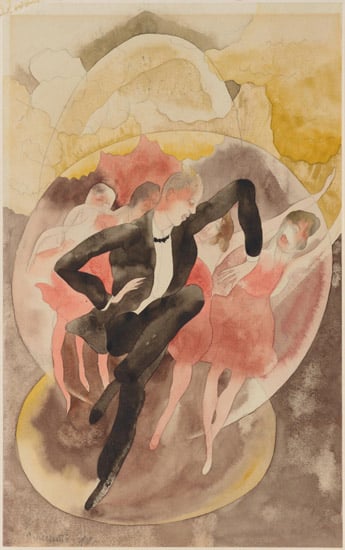
Charles Demuth, In Vaudeville (Dancer with Chorus) (1918). Image courtesy the Philadelphia Museum of Art.
“American Watercolor in the Age of Homer and Sargent” at the Philadelphia Museum of Art, March 1–May 14, 2017
An in-depth look at the “American watercolor movement,” spanning from 1860 and 1925, from the likes of Homer and Thomas Moran to illustrators like Maxfield Parrish.
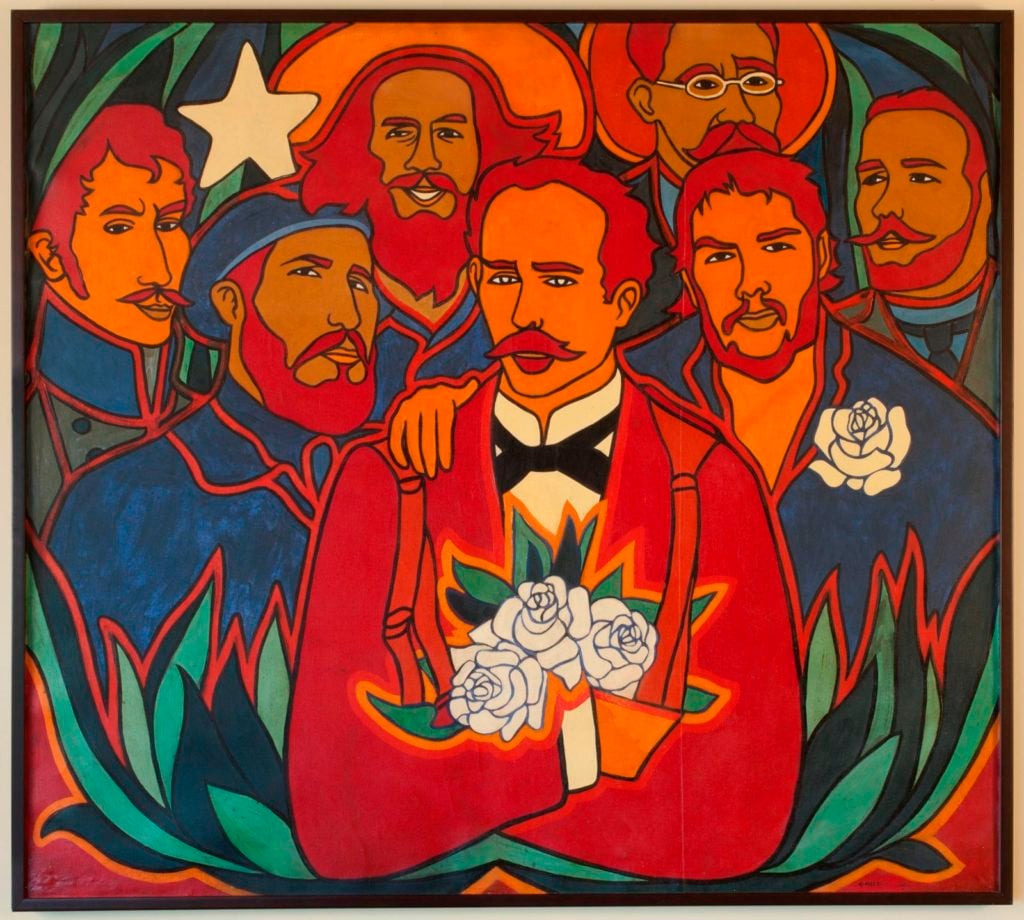
Raúl Martínez, Rosas y Estrellas (Roses and Stars), 1972, oil on canvas, courtesy of The Farber Collection, New York. © Raúl Martínez
“Adiós Utopia: Dreams and Deceptions in Cuban Art Since 1950” at Museum of Fine Arts, Houston, March 5–May 21, 2017
Focusing on the rarely seen production of artists actually working in Cuba during the decades of the Communist nation’s isolation, this show stakes its claim as “the most comprehensive and significant presentation of modern and contemporary Cuban art shown in the United States since 1944.”
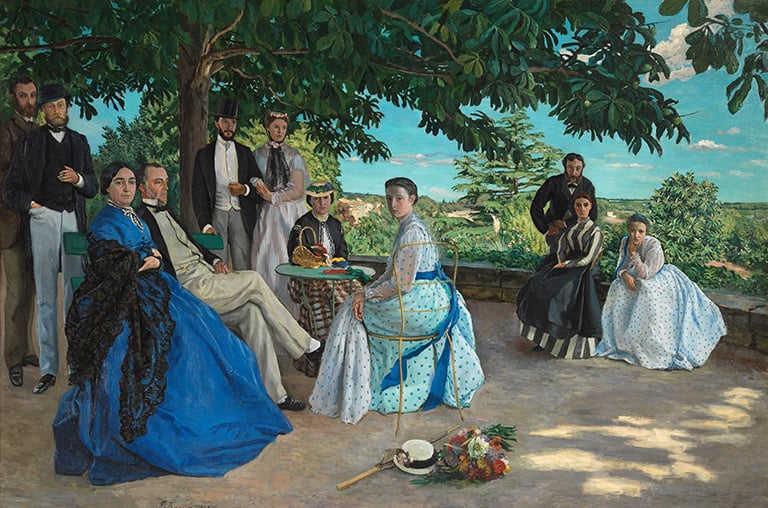
Frédéric Bazille, Family Reunion also called Family Portraits, 1867, Image courtesy Musée d’Orsay, Paris.
“Frédéric Bazille and the Birth of Impressionism” at the National Gallery of Art, April 9–July 9, 2017
The NGA has teamed up with the Musée Fabre, Montpellier, and the Musée d’Orsay to explore the influence of French painter Frédéric Bazille (1841-1870), who claimed an outsized, if overlooked, influence on Impressionists, via some 75 paintings.
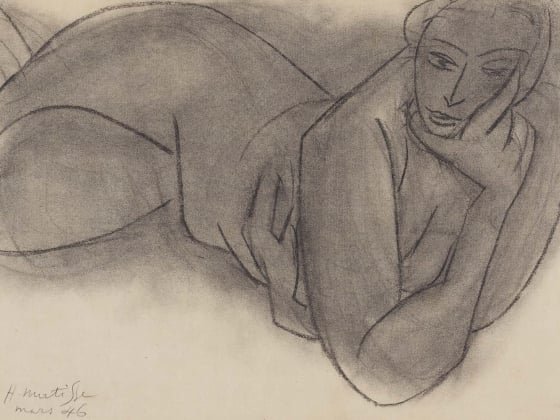
Henri Matisse, Reclining Nude (detail), 1946, Image courtesy MFA Boston.
“Matisse in the Studio” at the Museum of Fine Arts, Boston, April 9–July 9, 2017
A full-throated selection of the famous Fauvist’s paintings, sculptures, and drawings, set in the context of his “studio collection,” that is, the objects with which he surrounded himself for inspiration while at work—decorative arts and textiles from all over the world—promises to give a palpable sense of the diverse sources of his work.

Ewer, Egypt, late 10th–early 11th century, Rock crystal
“The Keir Collection of Islamic Art Gallery” at the Dallas Museum of Art, April 18–28, 2019
The DMA boasts that this show is “the largest public presentation in the history of one of the world’s most important private collections of Islamic Art,” with the long-term loan of treasures (like the rare rock crystal ewer, above) transforming the institution into the “the third largest repository of Islamic art in the United States.”
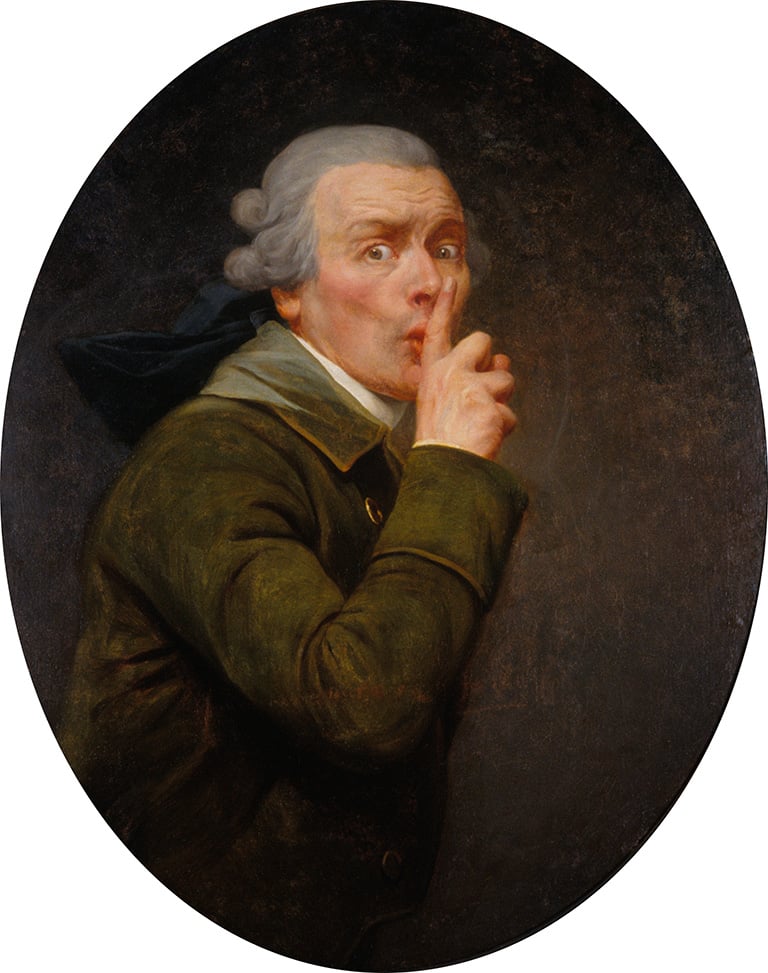
Joseph Ducreux, Le Discret (ca. 1791). Image courtesy the Spencer Museum of Art.
“America Collects Eighteenth-Century French Painting” at the National Gallery of Art. May 21–August 20, 2017
Featuring some 70 paintings by the likes of François Boucher and Jean-Honoré Fragonard from public collections from around the country, “America Collects” promises to tell “the story of the collectors, curators, museum directors, and dealers responsible for developing an American appetite for the French rococo and neoclassical styles.”
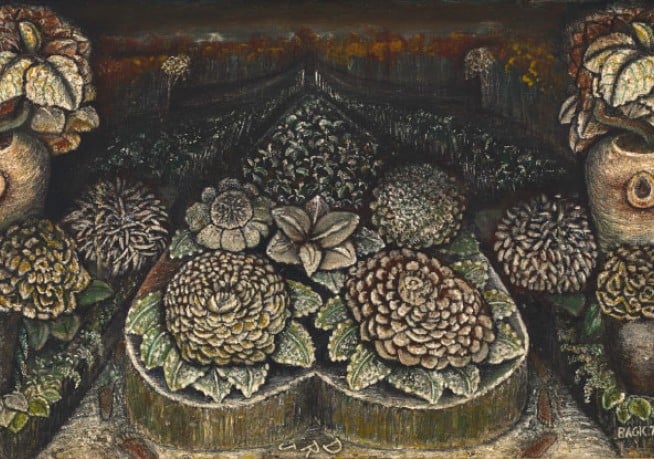
John Dunkley, Back to Nature, 1939
Courtesy National Gallery of Jamaica.
“John Dunkley: Neither Day nor Night” at the Perez Art Museum, Miami, May 26, 2017–January 14, 2018
Dunkley (1891-1947) is considered Jamaica’s most important historic painter, and this exhibition offers the first celebration of his work outside of his homeland, via a generous selection of paintings (only 50 are known to still exist, apparently) and carvings.